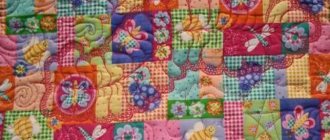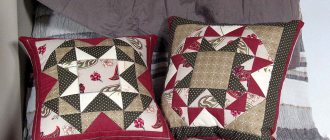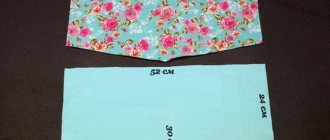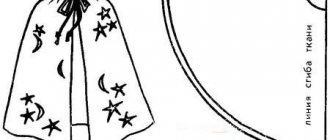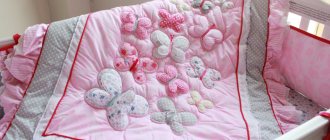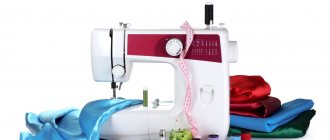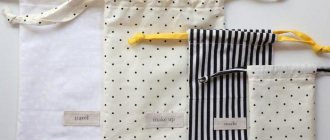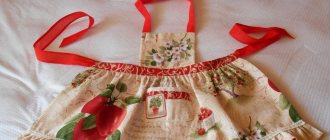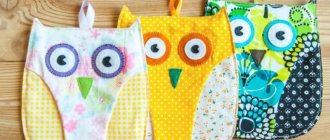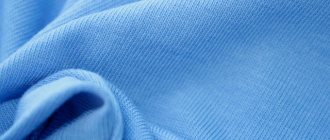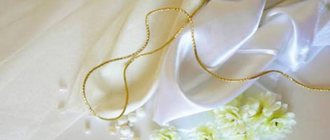How to choose the right material
A newborn baby needs special care. The main criteria to pay attention to when choosing a material are:
- comfort;
- hypoallergenic;
- environmental friendliness;
- waterproof;
- ease of care.
The task of sewing a blanket for an adult or child is quite doable.
Based on the points, there are several fabrics used in children's things (envelope, blanket, pillow). Cotton bedding is a leader in the production of baby accessories. Firstly, this is due to the fact that the material is of plant origin. Therefore, it does not cause allergies. And it allows air to pass through well. Based on the weaving of the threads, the following types of cotton are distinguished:
- calico;
- ranfors;
- chintz;
- percale;
- satin;
- a mixture of cotton and synthetics.
The upper part of the blanket can be sewn from any fabric, but the lower part must be selected based on the criteria described above. The inner filling should not only be warm.
Your goal should be a quality, durable product that can serve you for several years.
Description of characteristics:
- Bamboo fiber. It crumples, but meets all requirements.
- Sintepon. Affordable, easy to wash, light weight and does not cause allergies.
- Sherstipon. It copes well with absorbing moisture, is soft, but cannot be washed in a machine.
- Downy. Well breathable, soft, light in weight. Disadvantages: it clumps and has a characteristic odor.
The selection of outer fabric and inner filler is the first and important stage in the entire work.
Material requirements
When purchasing the materials needed to make a blanket, you need to follow some instructions:
- To avoid the appearance of heat rash, the fabric must have high breathability properties.
- The material should be able to easily absorb and release moisture.
- You need to make sure it is hypoallergenic.
- You need to buy environmentally friendly and safe materials.
Additional information. It is better to purchase goods in trusted stores, since sometimes even the information on the label may turn out to be unreliable.
Main material
It is advisable to choose cotton-based fabric for the underside of the blanket. It will be natural, easily breathable, but at the same time wear out quickly. If you take silk or twill, they will not be soft to the touch, but too difficult to care for. It is best to use cambric, satin, fleece, bamboo, calico, flannel. These materials meet all recommendations. Any soft and natural fabric is suitable for the upper side of the product.
Satin fabric
Filler
To ensure that the blanket has all the necessary characteristics, the following filling options are used:
- The down is very light and soft. It is highly breathable, but easily crumples and has a specific odor.
- Sintepon is the best option. Quite light, does not provoke allergies, does not roll into lumps, is easy to wash and is inexpensive.
Sintepon
- Holofiber is very warm, resistant to deformation, but more expensive than padding polyester.
Holofiber
- Bamboo fiber is a fairly good option, but it clumps.
Bamboo fiber
Decorative elements
Although the finished product will be used by a child, you shouldn’t get too carried away with decorating. The blanket should not contain elements that could harm the baby’s health. Therefore, there is no need to use rhinestones, sequins, beads and other protruding decorations. Volumetric patterns, figures, and animals sewn onto the surface will look quite organic. They can be made from multi-colored fabric, lace, and satin ribbons.
You might be interested in this. Several patterns and instructions for sewing a long floor-length skirt
Decorating a blanket
What tool will you need?
To sew, you need to arm yourself with thread and a sewing machine. It is better to choose threads numbered 40-60. And machine needles are numbered 90 -100. Don't forget about the pins, they will come in handy during the sewing process. A pattern will be convenient and appropriate for using homemade work.
It is advisable to use durable, high-quality material that can survive many washing cycles.
If the bedspread is sewn in a patchwork style, other materials will need to be used.
Patchwork technology for the production of home textiles is experiencing a real surge in popularity.
Patterns and diagrams
Children's beds vary. Therefore, blankets can be of two types: rectangular and square. The first type is much more convenient. Before cutting the required size of material, understand the parameters.
- If you have a boy, you can choose the parameters 150 x 120 cm.
- For girls – 140 x 110 cm.
- For newborns - 120 x 120 cm. These are mainly the parameters of the changing table plus 12-15 centimeters to it.
The standard sizes for newborns are 120*120 and 110*110, and for older children 140*110.
Make sure that the blanket does not accumulate at the bottom when covering it. Then the filler will clump together. And so that it does not reach 12-15 cm to the floor, as it will get dirty.
The question of how to sew a blanket for discharge is very relevant for young parents whose children were born in the cold season.
How to sew a blanket with your own hands
In order to sew a blanket with your own hands, you need to choose fabric, tools, and the right size. At the end of all the preparatory processes, the moment comes to choose which method to do everything. It should be made in such a way that it is convenient to wash and the filler does not come out.
Sturdy cotton fabric is an excellent choice for a baby product.
The upper part of the blanket is called the cover, and the lower part is called the underside or lining. And between them is the filler itself. Since not every filler is machine washable, it is better to sew a “sandwich” with the ability to remove the filler. Then, placing the lining with the tire in the wash, they will be washed like a sheet. And the filler will not wear out so quickly. And there will be no additional difficulties in preserving the characteristics and qualities for which the inside of the blanket was originally chosen.
The most difficult part of the sewing process is quilting, so it’s better to practice on small-sized items.
Master class on sewing a baby blanket
Many people make a blanket for a newborn with their own hands. The execution technique is described point by point. By performing them in this sequence, you will end up with a beautiful and practical bed element.
- Cut out the required shape according to predetermined dimensions. Don't forget about seam allowances.
- Lay the fabric on a flat surface, lay the pattern on top and secure it with pins.
- We draw out the necessary parameters and cut them out.
Note! Actions are performed regarding the upper and lower material.
- Prepare the filler.
- The fabrics should lie facing each other.
- Sew 3 sides. Having previously secured them all with pins and retreated 1 centimeter.
- Through the side that was left, turn it inside out and iron along the seams.
- The filler can be placed inside.
- Sew the unstitched side with a blind stitch.
To ensure that the filling stays evenly inside and does not roll down, stitch the blanket. For a plain fabric, it will be beautiful to make a pattern in the form of a stitch across the entire rectangle.
How to sew a blanket from padding polyester
DIY baby blankets made from padding polyester for newborns are a wonderful option. Sintepon is a hypoallergenic and lightweight material for filling a blanket. It is often chosen. For independent work, choose the method described above for sewing a blanket.
You can also simplify your task a little and connect the layers in this way: a layer of filler, two layers of fabric, folded facing each other.
Quilt made from patchwork
Sewing from scraps is fashionable and easy. In addition, a children's quilt can be a wonderful addition to the interior. Pieces of fabric can even be used from clothes that you no longer wear. Each piece should be 20 x 20 cm in size. All are ironed. When sewing them together, use the diagram:
- The flaps are connected horizontally;
- The resulting strips are stitched vertically.
It will be quite beautiful if at the end you finish the edges not with an internal seam, but use bias tape in a bright, contrasting print.
Don't forget to iron the seams. For the filler, you can take one of the lightweight and hypoallergenic materials. Cut it according to the parameters of the blanket and do not forget about the allowance of 1.5 cm. The fabric that will be on the lower part is connected to the upper (patchwork). Sweep away. Leave 1.5cm around the edge and fold over for decoration. Stitch. The edges can be finished with bias tape. The patchwork blanket and stroller are a stylish combination that also meets the warmth requirements.
There are a lot of patterns for patchwork, but it is not necessary that squares of the same size be connected to each other.
Quilt blanket
An exquisite quilt is loved by many. It is created using the same embroidery steps as other bedspreads (see above in the description), but it has its own peculiarity. Quilted designs are not easy to sew. The thing has a lot of nuances in sewing, which a beginner will need to deal with for a long time and painfully.
Don't forget about the purpose of the blanket: it should be soft, warm and easy to clean.
Working on a piece of furniture or bed by hand is always more appreciated and is one of the trends that will never go out of fashion. In addition, homemade works give the room more comfort.
Cutting out a blanket
Take measurements before cutting. Dimensions are taken depending on the size of the crib and the purpose of the blanket. To make it gracefully hang from the crib, add an allowance of 15-25 cm to the width and length. There are standard sizes of blankets:
- 90x120 cm;
- 110x140 cm;
- 143x215cm.
There are non-standard sizes:
- 90x90 cm, blanket for stroller, cradle;
- 120x120 cm, blanket for discharge from the maternity hospital, for walks;
- 150x130 cm, blanket - sleeping bag in the shape of a bag, then useful as a simple blanket.
Make a quilt pattern by drawing a rectangle from your measurements, with a 1.5cm seam allowance on all four sides.
